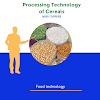PRICE DETERMINATION AND PRICING POLICY OF MILK PRODUCTS
17.1 Introduction
In dairy industry price determination and price policy decision are to be performed for milk producers as well as for consumers. In dairy industry, milk collection takes place either through organized set up consisting of cooperative and other private well established dairy plants. The unorganized set up consists of private personnel / middle men.
17.2 Pricing Strategy for Raw Milk
There are various methods of paying for milk procured from producers viz.,
1. On the basis of volume or weight
2. On the basis of fat content
3. On the basis of fat as well as solids-not-fat (SNF) (Two-axes pricing system).
The most popular and prevalent method is two axis system in which both fat and SNF are considered for providing payment where in the price of SNF is kept 2/3 of the price of fat. The pricing methods for payment to milk are summarized below:
Table 17.1 Pricing methods of Milk
Sr.
No. Method Characteristics Advantages Disadvantages
1 Based on volume or weight By using the weighing machine or spring balance. Simple to calculate milk price
No expensive testing equipment is required No incentive to improve quality of milk
2 Based on fat amount By finding out the fat percentage of milk by
conducting test. Using directly fat percentage or kg fat Fairly simple to calculate milk price
No benefit to milk producers adding water to milk Necessary to
purchase fat testing machines.
3 Based on fat as well as By using the formula* Provides an
incentive to Necessary to
purchase fat testing
solids- not-fat content increase fat and SNF machine and density meter.
The milk producers who are members of cooperative societies get the price of their milk based upon two axis method only. The cooperatives give regular and remunerative price of milk to their member producers. The price to be paid is decided and revised regularly by the board of directors of district cooperative union. The milk producers who are supplying milk to large private dairy plants like Nestle in north India also get price of their milk more or less similar to the cooperative set up. Those milk producers who supply milk to private traders/middlemen get their price based upon mutual understanding between the two parties and based upon demand supply situation.
17.3 Pricing Strategy for Milk Products
Milk is a complete food. It is an essential food item for all the households. Apart from liquid milk, large numbers of traditional and western dairy products are sold in the market. There are no specified rules for setting the price for consumers just like two axis pricing method for milk producers. The price of milk and milk products is generally determined based upon market conditions (type of competition). In India, 'Amul' is the market leader in dairy industry. It is a cooperative organization. Generally, it is seen that Amul decides the price for a milk product, particularly liquid milk, and others immediately follow. For setting the liquid milk price the usual factors considered are.
i. Price to be paid to milk producers.
ii. Other expenses viz. processing, transportation, storage etc.
For other milk products forces of demand and supply as well as organizations strategy is important. For example, when Amul introduced their ice cream in the market, they sold it at fairly low price so as to penetrate the market.
17.3.1 Illustration
The price to be charged from the consumer depends upon many factors. It essentially considers cost of production, demand situation, competitors’ policy, marketing environment etc. Following illustration shows the price fixed by the entrepreneur for basundi. On similar lines prices for other dairy products can be ascertained and fixed.
17.3.2 Cost analysis of the basundi manufactured in the scraped surface heat exchanger (SSHE)
Cost analysis of the product prepared in SSHE was carried out as shown in Table.17.2 and Table
17.3. The cost analysis is based on the optimum operating conditions among the studied conditions of the machine. The cost of product worked out to be Rs 97.97 per kg. The cost of raw material per kg of basundi would be Rs. 84.72.Which is 86.48 % of total cost. The analysis revealed that estimated operating cost of basundi in the machine would be Rs. 1324.49 per batch (Rs. 13.24 per kg of the product) which is 13.52 % of the total cost. The rate of Amul basundi in the market is Rs. 115/kg. Thus the entrepreneur can keep the price around this range. If it is kept at Rs. 110/kg. From it, the firm can get a profit Rs. 12.03/kg. This is 12.28 % of the total cost.
Table 17.2 Raw materials cost for preparation of 100 kgBasundi (Figures are for 2011-12)
Sr.
No. Ingredient Rate per kg
(Rs.) Quantity required
(Kg.) Cost of ingredient(Rs.)
1 Standardized buffalo 30.00 240.000* 7200.00
milk
(4.6 per cent fat)
2 Sugar 40.00 12.500 500.00
3 Di-sodium hydrogen 75.00 0.300 22.50
phosphate, dihydrate
4 Condiments @ 3 per 250.00 3.000 750.00
cent
Basundi 100 kg 8472.50
Raw material cost (Rs.) per kg of Basundi Rs.84.72
Source: Patel H G (2000): Standardizing method for manufacture of basundi, a thesis submitted to Anand Agricultural University, Anand
* Considering 1 per cent product loss
Table 17.3 Final cost per kg of Basundi (Figures are for 2011-12)
Sr.No. Particulars Rate Quantity Cost (Rs.)
1. Raw material cost Rs.84.72/kg 100 kg 8472.50
2. Works overhead cost
-Superivisor-1 Rs.150/day Rs.150.00 150.00
-Labourers-2 Rs.65/day Rs.130.00 130.00
3. Utilities cost
-Steam Rs.1.20/kg 180.92 kg 217.99
-Electricity Rs.5/kwh 54.42 kwh 272.10
-Cleaning solution Rs.50/kg 2 kg 100.00
-Water Rs.10/500 lit 720 lit 14.40
4. Packaging cost Rs.20+Rs.0.20 200 bottles 440.00
including sealing* sealing cost per bottle
Total cost for 100 kg Basundi = Rs.9796.99
Cost per kg Basundi = Rs.97.97
* 200 glass bottles used 10 times on an average
The above illustration highlights the manner of price fixation for dair















0 Comments
Send feedback